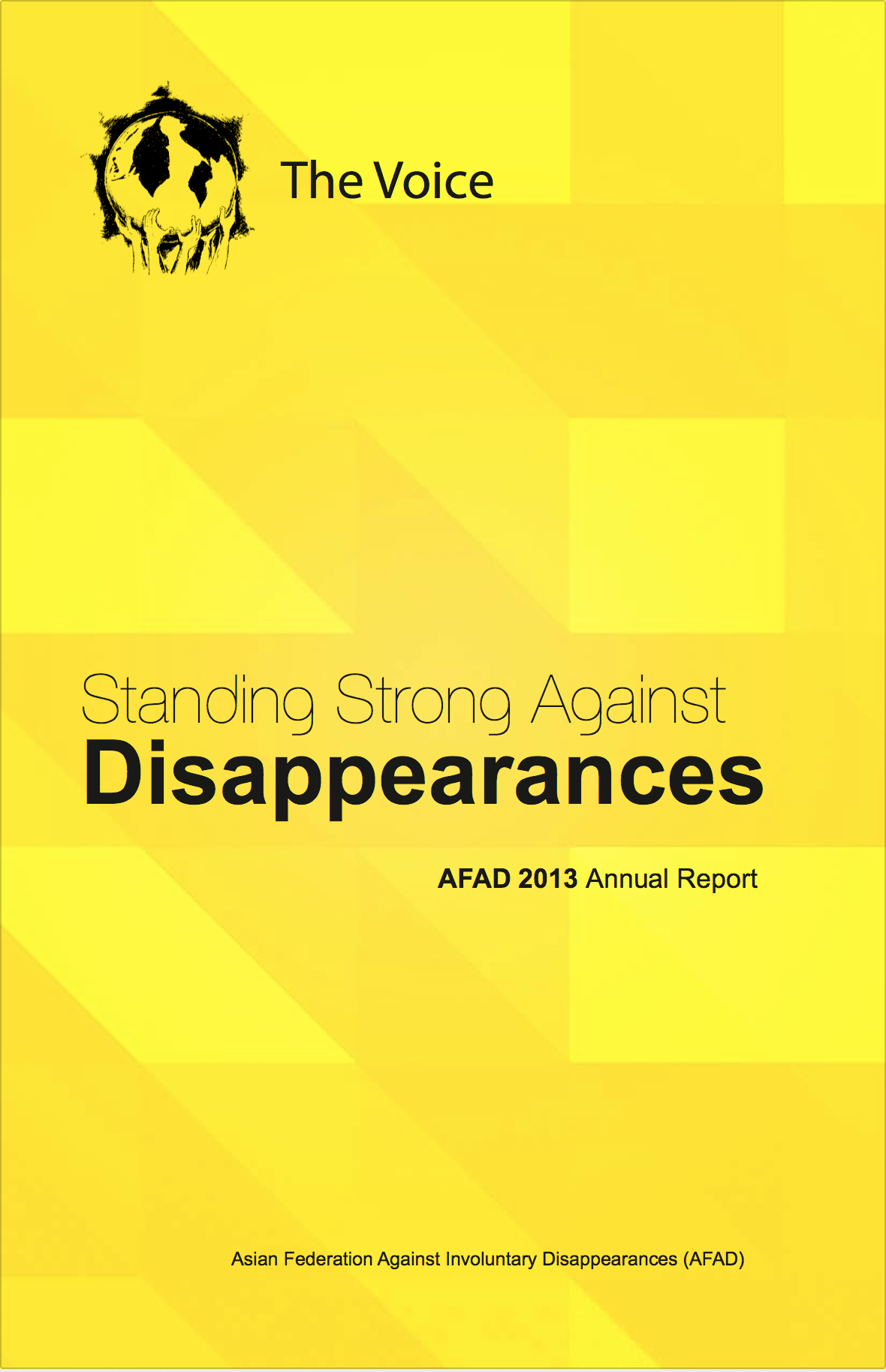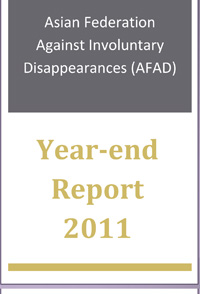Introduction
In the year 2014, AFAD entered its 16th year of trials and triumphs to attain its mission for a world without desaparecidos. During this Congress, the Defence for Human Rights from Pakistan was accepted as a new member of AFAD. Also earlier during the year, Shui Meng Ng, wife of disappeared development worker in Laos, Sombath Somphone, was accepted by AFAD as an individual member. This acceptance of individual membership an exceptional case because no organization could exist in Laos because of repression.
 The year 2013 ended with the Government of Argentina bestowing upon me the Emilio Mignone International Human Rights Prize on 10 December 2013. It is a recognition of the significance of the struggle against enforced disappearances in Asia that submitted the highest number of cases to the United Nations.
The year 2013 ended with the Government of Argentina bestowing upon me the Emilio Mignone International Human Rights Prize on 10 December 2013. It is a recognition of the significance of the struggle against enforced disappearances in Asia that submitted the highest number of cases to the United Nations.
At the end of 2013, the International Convention for the Protection of All Persons from Enforced Disappearance (Convention) garnered 92 signatories and 41 States parties. While Asia has rampant cases of disappearances, the only additional State party to the Convention is Cambodia. Not one Asian country has replicated the Philippines in enacting an anti-enforced disappearance law. In Nepal, a nagging insistence for false reconciliation between the victims and the perpetrators by merging the anti-disappearance bill with the truth commission blocks the road to a genuine and lasting peace. The much-awaited ratification of the Convention by Indonesia was not realized… No progress was seen in South Korea on victims of disappearances committed by North Korea.
I. Introduction
A. Regional Phenomenon of Enforced Disappearances Enforced disappearance is the worst and most complex human rights violation committed against the victim and extends to his or her family, community, support group and even the greater society. The challenges imposed by this practice in an increasing number of dictatorial and even democratic states in Asia and the rest of the world render any person vulnerable to human rights violations, specifically to enforced disappearance.
1. THE PHENOMENON OF ENFORCED DISAPPEARANCES IN ASIA
In Timor Leste, approximately 186,000 to 250,000 people died and made to disappear during the Indonesian occupation of Timor Leste based on report of the Truth, Reparation and Reconciliation Commission of Timor-Leste, entitled, “Chega!” But after achieving the independence in 1999, both the Indonesian and Timor Leste governments have continually ignored the recommendations submitted by the Commission on Truth and Friendship and the continuing cry of victims’ families for justice. The release of indicted militia leader, Martenus Bere, who is suspected to be one of those responsible for the past atrocities is not only an insult to the families and survivors but also a breach to the spirit of friendship and reconciliation. A lobby group of the Asian Federation Against Involuntary Disappearances (AFAD) met with President Jose Ramos-Horta on 25 November 2009, in Dili, Timor Leste and presented to him the need for the signature and ratification of the government of Timor Leste to the International Convention for the Protection of All Persons from Enforced Disappearance (The Convention). The president made a clear commitment that he would undertake all efforts to sign and ratify this international treaty before the end of 2009. He noted that had he been alerted earlier, the government of Timor-Leste could have already been a state party. As of this writing, however, the promise remains unfulfilled. The calls of AFAD were reiterated during the visit of the UN Working Group on Enforced or Involuntary Disappearances in January 2011. The latter also called on the Timor Leste government to sign and ratify the Convention.

